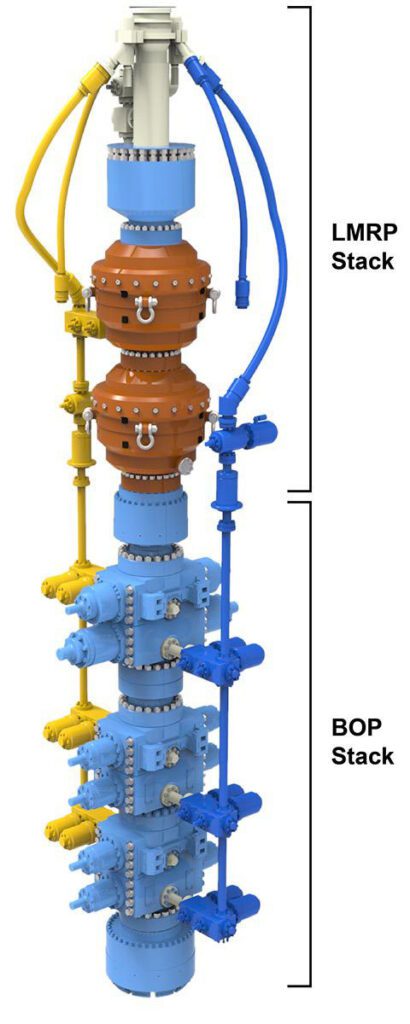Photo credit to Taras Senyshyn
What make a Blowout Preventor:
Flex Joint:
During drilling operation, a floating rig might have slight coordination movement due to waves along with other factors.
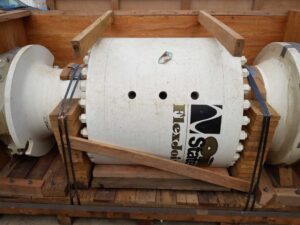
As such a flex joint is used to allow the riser system to be remain connected to the BOP stack, which is locked onto the wellhead, and also allow rotation with minimum bending.
This will reduce stresses on the string by allowing offset angles.
Annular:
While the drill string/casing runs through the BOP stack and into the well, the Annular is used to maintain a seal in the bore.
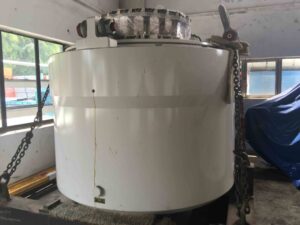
It utilises a device referred to as “Packing Element”. It is essentially a rubber donut that when applied pressure, tightens or squeezed inwards to create a seal between the casing/drill string and the wellbore.
The Annular normally sits on top on the BOP stack.
BOP Pods
BOP Pods are used to control the functions of the BOP Stack.
Most shallow water drilling rigs utiltise hydraulic pods while deep and ultradeep drilling uses Mulitplex subsea drilling controls (MUX) pods.
MUX pods are basically a combination of electro and hydraulic systems that is used to remotely operate the Blowout Preventers (BOP).
Hydraulic pods, which uses hydraulic fluids to operate the BOP, their efficiency decreases dramatically with water depth which significantly increases the response time needed at the BOP stack.
Deepwater drilling rigs therefore uses a MUX pod system which consist of electrical lines to relay the signals from rig to the MUX pods, which then converts the signal to the hydraulic systems for function operational.
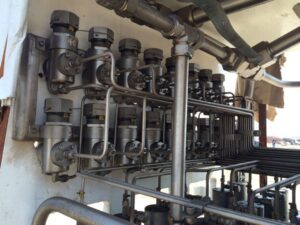
Kill and Choke lines:
Kill and Choke lines are external conduits that runs parallel with the drilling risers from the subsea BOP stack to the surface. They are used to circulate fluids into and out to control the well pressure.
The Kill line is a high pressure line which acts as a pumping outlet that is connected from the mud pumps to the BOP stack. During killing/filling operations, operators will pump fluids into the well through the kill line to the annulus to overcome well pressure.
The Choke line is another high pressure line that is connected to the BOP stack, lined up to the choke manifold. It allows the diversion of the returns from the annulus to the choke manifold while killing operation and establish choking pressure on the well if required.
The Choke and Kill lines are connected to a series of valves which are in turn connected to selected subsea BOP. This allows the controls of the flow to the choke and kill manifold and allow access to either choke or kill the well.
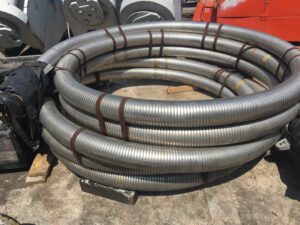
LMRP/Wellhead Connector:
A LMRP and Wellhead Connector is a hydraulically operated connector.
It is used to either join the BOP stack to the subsea wellhead or the LMRP stack to the BOP stack.
It is designed to provide bending and tension capabilities to withstand the bending stresses and any forces that might cause separation such as well pressure, riser tensions or movement of vessel.
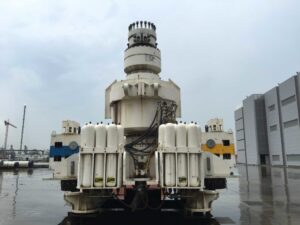
There are different models/designs for specific wellhead connection
Bonnets:
Typical ram actuator assemblies (operator systems) are secured to the BOP housing by removable bonnets.
Unbolting the bonnets from the housing allows BOP maintenance and facilitates the substitution of rams.
In that way, for example, a pipe ram BOP can be converted to a blind shear ram BOP.
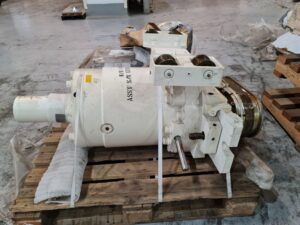
Ram blocks:
In such BOP stacks, there will be a combination of ram blocks used. There are a 5 variety of ram blocks;
Blind Ram, when closed without anything in the bore, creates a seal. It will not create a seal if there is tubular in the bore as it does not have the capability to shear.
Shear Ram are equipped with cutting blades that are designed to shear the tubulars and creates a seal in the wellbore at the same time.
Casing Shear Ram while similar to the Shear ram, will shear casings in the wellbore but will not seal the wellbore. Casing Shear rams are specially designed to shear large diameter tubulars which the Shear ram is not capable of.
Fixed Pipe Ram has sealing element made of Elastomers and steel, fitted to specific sizes such as 3-1/2”, 5”, 5-1/2”, 5-7/8” etc. When pressure is applied, the sealing element, while shaped to fit a particular size of tubular, will enclose the pipe and seal off the wellbore around it.
Variable Bore Ram (VBR) similar to Fixed Pipe ram, have the advantage of accompanying a range of sizes at one time IE 3-1/2” to 5-1/2”. The disadvantage is that it does not have as high a hang-off weight as compared to the Fixed Pipe rams.
When the drill string has a tool joint installed, it allows the operator to sit the string on the ram blocks, the ability called Hang Off.
It is worthy to note that by shearing the tubular in the wellbore, it will result the remaining string to drop down the bore. As such, sets of pipe rams and/or VBR can be installed on bottom cavites to hold the string in place prior shearing.
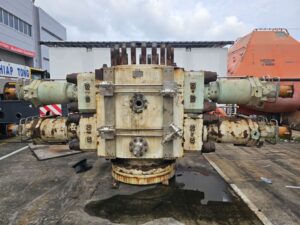
There are also dual ram blocks, where the operator runs two tubular strings down the wellbore and the ram block’s capable to seal/shear two tubulars at the same time.
The blowout preventer (BOP) is one of the most critical equipment to safe Surface and Subsea oil and gas drilling.
As its name implies, BOP is designed to prevent and/or control “Kicks” which might eventually lead to blowouts. A kick is there is a difference in pressure and the formation fluids (oil, natural gas, water etc) begins to flow into the wellbore and up the drill pipe/ annulus.
If unattended or ignored, a kick can disastrously turn into a blowout which is when there is an uncontrolled release of crude oil and/or natural gas
While there are a few approaches to a kick, the common methods are the Wait & Weight Method (W&W) and The Driller’s Method”.
The W&W method is to allow the influx pump/circulated out and the kill mud to be pumped in simultaneously. In addition to this, the Drill Pipe pressure is calculated and followed accordingly. This method is also commonly known as “The Engineer’s Method” as there are a lot more calculation involved.
The second is “The Driller’s Method”, a two-step where the influx is removed with the original mud’s weight via the first circulation. the next circulation is to introduce the kill mud to keeping it circulate until the weight returns back to surface.
Both methods involve shutting in the kick prior to any further actions.
When a kick is detected, the BOPs are activated to stop the influx.
To simply explain BOP, is a large equipment that covers the opening of the well. By doing so, it can control or kill the well by closing its cavities, which are equipped with different ram blocks.
A BOP stack or BOP system usually consists of two type of BOP, Ram and Annular.
Depending on the requirement, there are Onshore BOP and Offshore BOP. The main difference between onshore and offshore BOPs are the method it is controlled.
Onshore BOP system typically contains 2 unit of Ram BOP and 1 unit of Annular while Subsea BOPs can contain 2 to 4 unit of Ram BOP, 2 unit of Annular, Wellhead connectors, Hydraulic and/or Electro (MUX) pods and guide frame.

